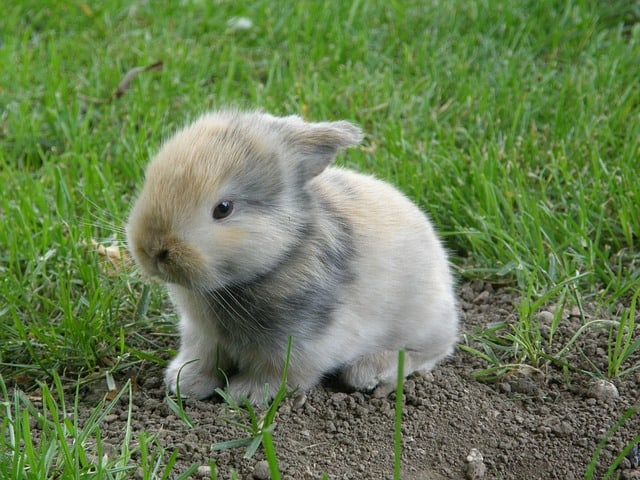
Do you want to start raising your rabbit correctly from the beginning? Well, keep reading this article and find out about everything baby rabbits need. Care, food and much more …
What do baby rabbits eat?
The only food for a baby rabbit during its first days of life is breast milk. We know that in many cases it is not possible so there is a way to feed them ourselves.
If you have to take care of feeding a baby rabbit, you should use a formula prepared with goat’s milk, administering it with a small bottle in the afternoon, just as the mother would.
Never try to administer foods that are not suitable for age.
From the third week of life you can start introducing hay into your bunny’s diet, while continuing to provide milk. As with all babies in the animal world, it is best to make a change in diet progressively, gradually removing the milk and introducing more and more hay.
Eating hay has multiple benefits for both the rabbit’s teeth and its digestive system, in addition to helping it eliminate dangerous hairballs. Alfalfa hay is recommended up to 6 months of age.
From the fifth week of life you can start to incorporate the feed for rabbits. There is a wide variety of quality feed suitable for them.
At 8 weeks of life of our baby rabbit we will stop giving it milk and we will start giving it vegetables in small quantities.
How to make milk for baby rabbits?
If their mother is not here or for some reason does not feed them, we will have to feed them. Homemade milk for the baby rabbit has to provide the same nutrients as the original breast milk, so that it does not cause any type of discomfort, gas or diarrhea. Therefore, it is recommended to prepare a special milk formula for baby rabbits using goat’s milk, the yolk of an egg and a teaspoon of corn syrup. If you cannot find it, the prescription formula for newborn cats is also suitable for rabbits.
How to give baby rabbits a bottle?
Warm the milk a little and put it in a bottle with a small nozzle, try that it is not too hot. If the rabbit is too small you can also use a syringe.
- Take the rabbit in your arms with its legs down, never belly up, and try to raise its head slightly, always in a way that feels comfortable and calm.
- Insert the tip of the bottle to the side of the mouth, never from the front. When you have inserted it, you can turn it forward a little.
- Squeeze gently to get a little milk out; Upon sensing the taste, the rabbit will begin to suck on its own.
The amount should increase little by little, starting with just 3 milliliters for each meal during the first week of life, twice a day, until reaching 15 milliliters for each meal in week 6 or 7. Of course, the amounts They are indicative, since each kitten has different nutritional needs.
What should a kitten’s cage be like?
You must ensure that the cage is as clean as possible at all times and place it in a place away from the sun without drafts as sudden changes in temperature can be harmful to them. It is important that you do not let the kits are cold and as with the bottle we must take care of it. In the event that the mother rejects them or that she has died, we must have a thermal bag with hot water next to her.
How to know if a new born rabbit is sick?
You should see that it does its business on a daily basis. At first you may have some diarrhea. But if you notice that the diarrhea does not stop, you should visit a veterinarian.
If you see that it rejects any type of food, you should also go immediately to the vet.






